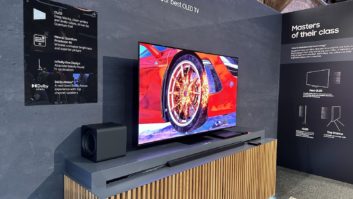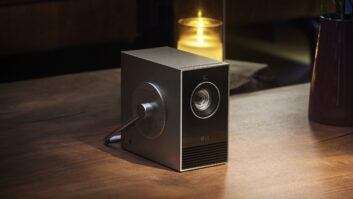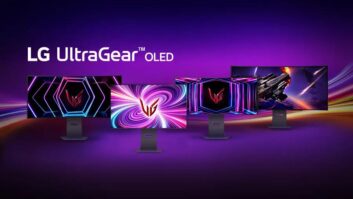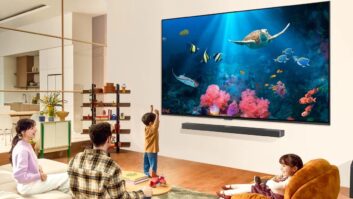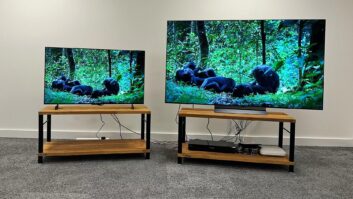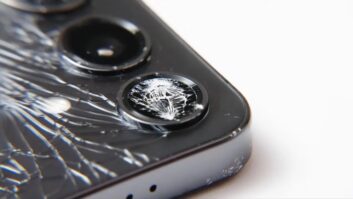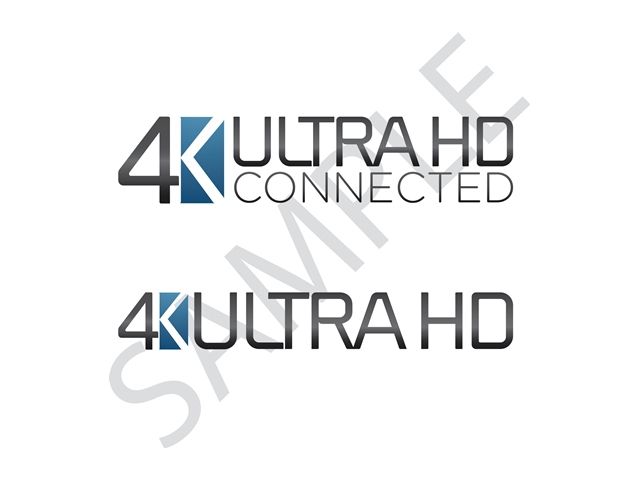
Samsung will display CEA’s 4K Ultra HD logo on all of its 2015 UHD TVs to designate that they are “true 4K UHD TV models” that don’t use an inferior RGBW pixel structure adopted by rival LG on entry-level 4K smart TVs, the company announced.
TVs that use RGBW pixel configurations “do not meet the CEA requirements for UHD TVs due to the limitations on pixel colors,” Samsung contended without mentioning LG by name. “The white sub-pixels that are mixed among the red, green, and blue sub-pixels in RGBW panels restrict and limit the color palate a TV is capable of showing while diluting the overall picture quality by affecting clarity, brightness and sharpness.”
In a blog post, the company further explained that RGBW “converts some of the RGB sub-pixels to white light, reducing the number of the pixels that can actually produce colors by 25 percent. This equates to a lower quality, less detailed picture on the screen.”
Samsung also noted that its UHD TVs comply with the UHD TV definition established by Digital Europe (DE), which the company said is “recognized in Europe as the official definition for true UHD products.”
“These UHD TV definitions are important because they help to reduce confusion for consumers searching the market for a new, cutting edge 4K UHD TV,” said Young Lak Jung, VP Of Samsung Electronics’ visual display business. “We will continue to work with our key partners, such as the CEA and DE, to ensure clear performance and purchase standards are available as the demand for UHD TVs continues to grow.”
LG is using RGBW technology in the $2,499-suggested 65-inch 65UF6800, and the $1,699-suggested 55-inch 55UF6800, which are available on Amazon at $1,599 and $897, respectively. The RGBW technology enables LG to produce lower cost 4K smart LED TVs, which the company admits do not comply with CEA’s specifications.
LG has said it would not use CEA’s logo to promote or advertise the TVs, but it also said that its own tests revealed that color gamut and saturation are almost the same as RGB-pixel TVs under most circumstances. The TVs also meet 4K performance criteria established by most major display-standards groups, including VESA, THX, ISO and IDM, LG said.
LG is also considering the use of the technology on more than just entry-level models because it gives the company the option to provide higher brightness or greater energy savings.
In a statement to TWICE, LG also had this to say: “RGBW technology is an advanced LCD/LED TV-panel structure recently implemented in some series of LG’s 4K ULTRA HD TVs. It uses red, green, blue and white sub pixels to deliver stunning 4K Ultra HD resolution (8.3 million pixels; 3840 x 2160 resolution) along with the added benefits of enhanced brightness and energy efficiency.
“RGBW technology is certified by leading international organizations, including UL and Intertek, according to international standards for delivering 4K resolution, and it is inaccurate to suggest that this technology limits the color palate or has any negative impact on clarity, brightness or sharpness.”
The company added, “While LG is a proud member of the CEA and supports its goal of promoting 4K Ultra HD, LG elected not to participate in the voluntary CEA logo program for LG 4K ULTRA HD TVs this year.”
Last November, CEA began licensing two 4K UHD logos for voluntary use by manufacturers on product packaging, marketing materials and promotional activities for TVs that meet CEA’s voluntary core characteristics for 4K Ultra HD display products.
Other CEA logo requirements include the use of more than 8 million active pixels, with at least 3,840 horizontal and at least 2,160 vertical pixels; at least one HDMI input supporting 3,840 by 2,160 native content at 24p, 30p and 60p frames per second; and a minimum color bit depth of 8 bits.





